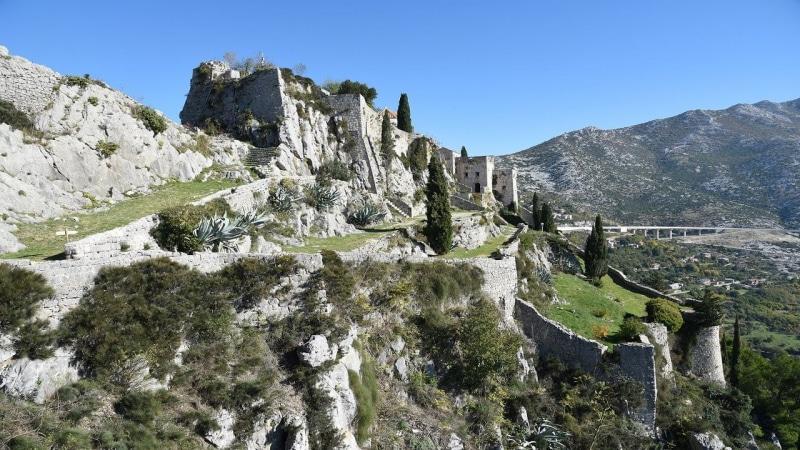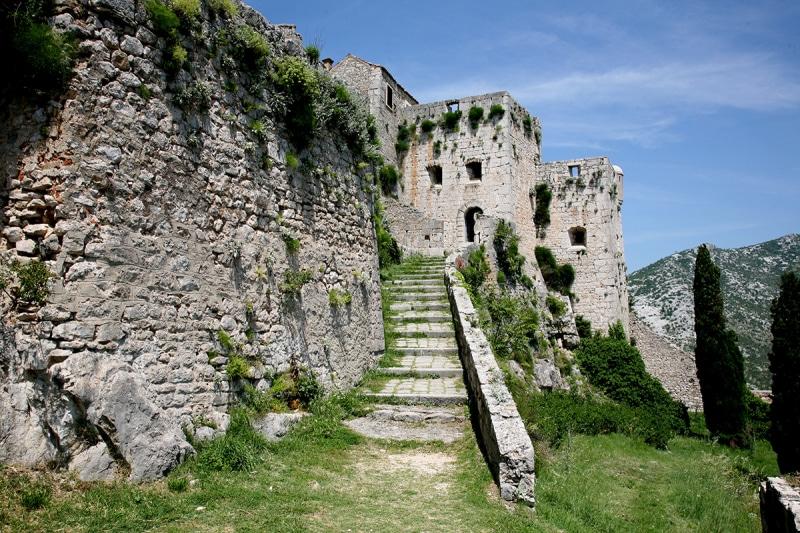Klis Fortress
Removed from Unnamed collection





Source: Glasgow Better Adventure Images may be subject to copyright. Learn More
Perched on the steep cliffs of the gorge between Kozjak and Mosor, the Klis Fortress stands with a commanding view, one eye gazing at the sea and the other watching over Zagora. This fortress was established in a remarkable strategic position, allowing for both military and commercial oversight of the entire Klis Valley, as well as the regions of Salona and Split. Due to its significance, Klis was often hailed as the key to Dalmatia and the heart of the medieval Croatian kingdom.
The earliest traces of settlement around the Klis Fortress come from the Krčina cave, where ceramic pottery was discovered. This pottery, with its unique imprinted designs, belongs to the Impresso culture, which flourished from 6000 to 4500 BC along the Adriatic coast. Although much about the people of that era remains a mystery, it's possible that these early inhabitants were among the first to practice agriculture on the Adriatic coast.
The first identifiable inhabitants of this area were the Dalmatians, an Illyrian tribe. They settled from the river Krka to the Neretva, including the region along the river Jadro, known today as Solinčica beneath Klis. The Dalmatians strategically built their forts on natural elevations to fend off potential attackers. At the base of the Klis Fortress, remnants of such a settlement have been found, serving to control the passage between Kozjak and Mosor. Along with other nearby forts, the hill below Klis managed access to Illyrian Salona and the mouth of the river Jadro. This strategic role continued with every subsequent structure built on this site. Today, visitors can wander through the fortress and imagine the echoes of history resonating within its ancient walls. The breathtaking views alone are worth the visit, offering a panorama that stretches from the rugged mountains to the shimmering Adriatic Sea. It's a place where you can feel the pulse of history and the whispers of the past in every stone.
 Glasgow Better Adventure
Glasgow Better Adventure  Croatia
Croatia